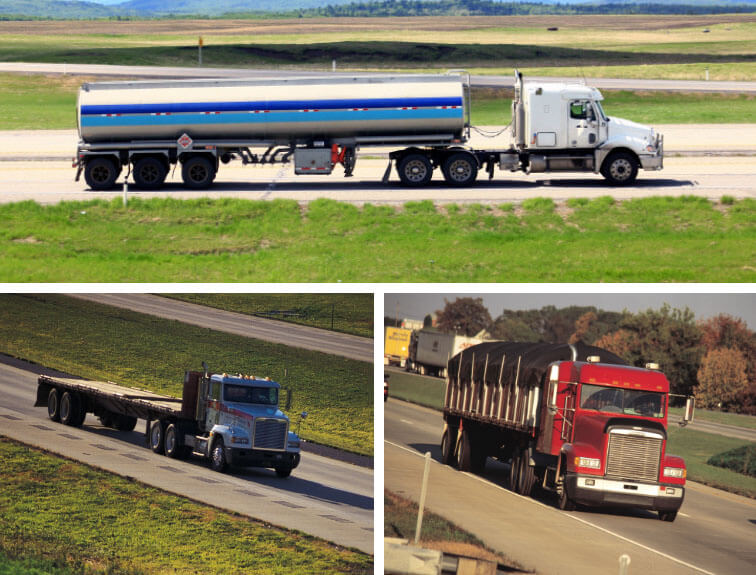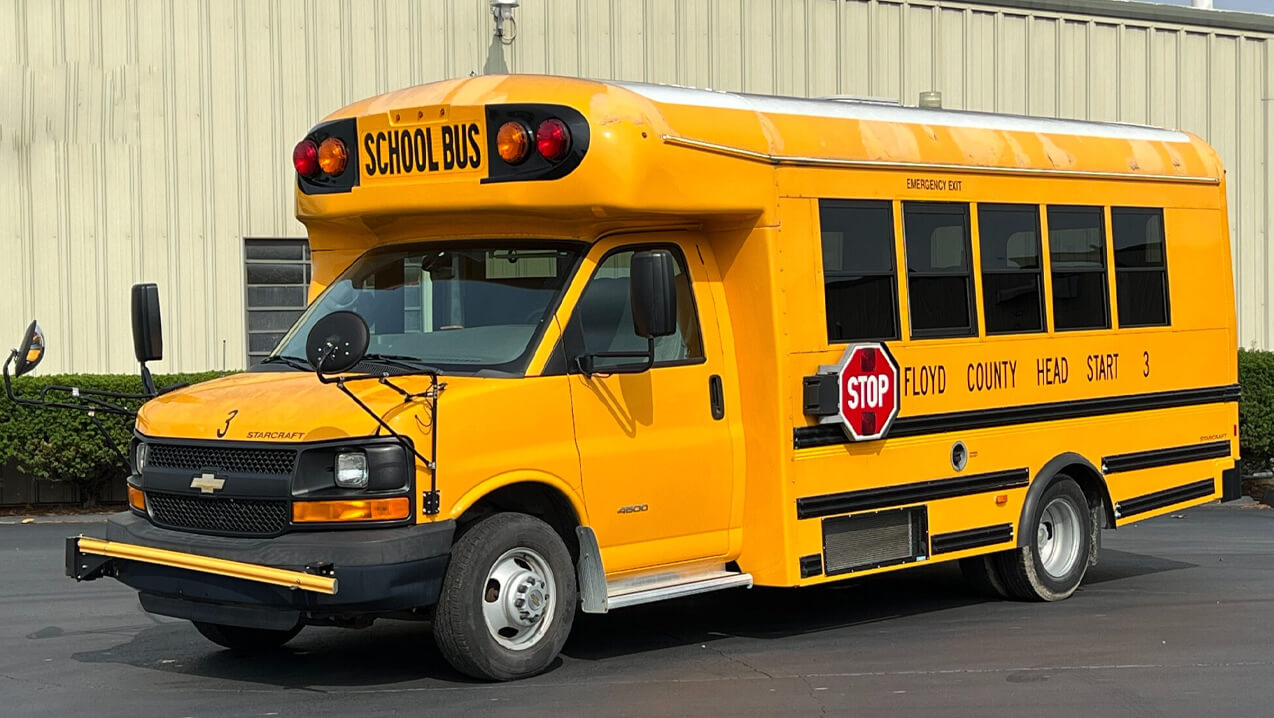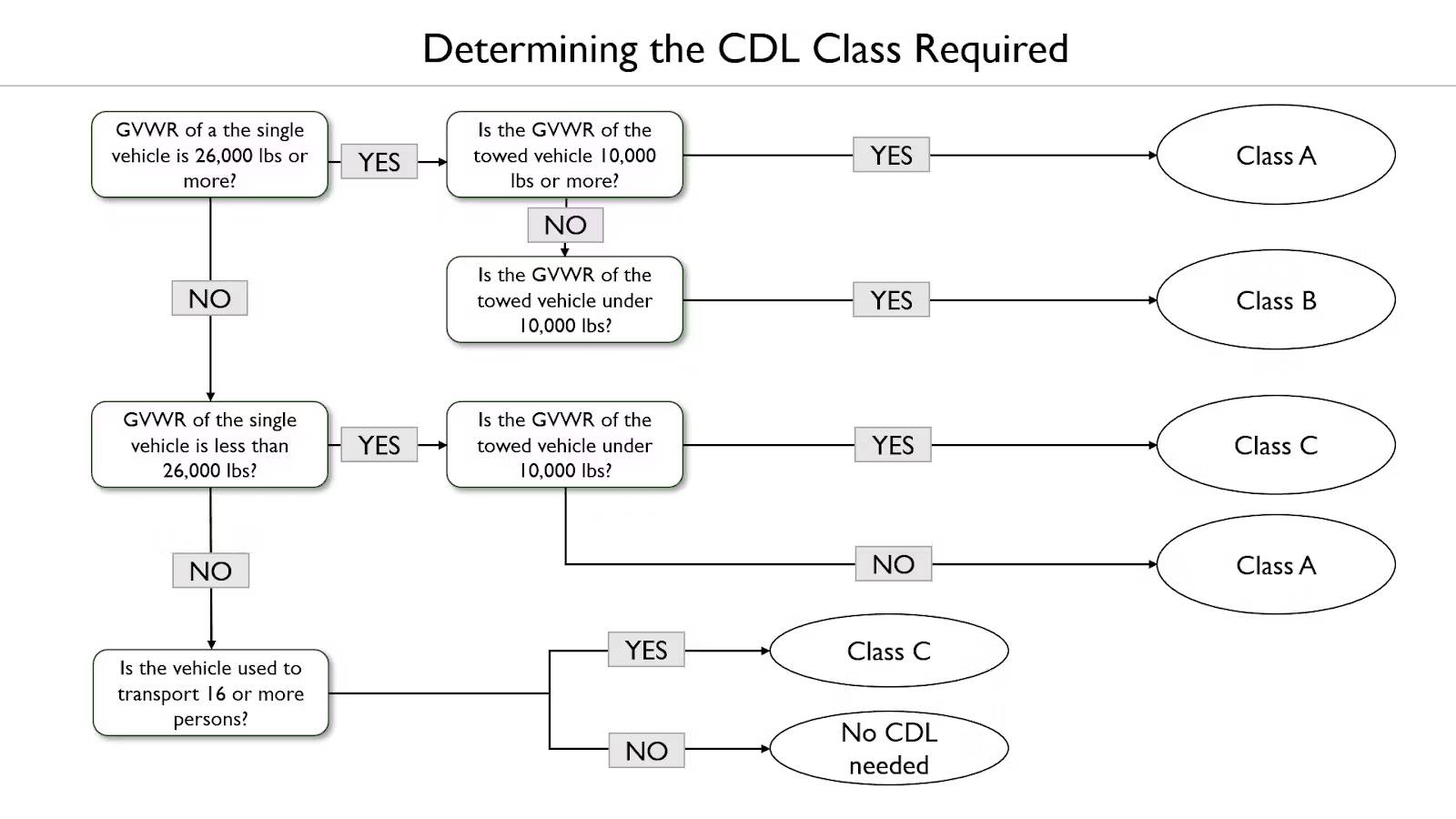Do not start your journey to a career in commercial driving without first understanding the different CDL classes available! When it comes to becoming a professional commercial driver, whether it is driving a long-haul truck, making local deliveries, or hauling hazardous materials, understanding the differences in Class A, B, and C CDLs will better prepare you for the right career path. Each class carries various opportunities, vehicle types, and requirements to fulfill. To guide you, this post highlights the key details about each class, from its definition, and vehicle types to its benefits and requirements. Keep reading to gain clarity and make an informed decision for your career!
What are the different CDL classes?
There are three common types of CDLs classified into class A, B, and C. Different classifications relate to the weight and type of vehicle driven along with the kind of cargo or passengers carried. Here’s a breakdown of all CDL classes:
Class A CDL
The Class A CDL is the highest license class for commercial driving. With this license, drivers are allowed to drive large combination vehicles with a Gross Combination Weight Rating of 26,001 pounds or more, as long as the vehicle being towed weighs more than 10,000 pounds. This license covers a wide range of heavy-duty vehicles, perfect for those desiring to engage in long-haul trucking, specialized cargo transportation, or other demanding commercial driving positions.
Some types of commercial vehicles you are authorized to operate with a Class A CDL are:
- Tractor-trailers: Typically used for long-haul and local deliveries.
- Flatbeds: Used for oversized or heavy equipment.
- Livestock carriers: Designed for transporting animals in agricultural industries.
- Tankers: Used to carry liquid or gaseous materials (required a tanker endorsement).
- Dump trucks with trailers: Used in construction to carry bulk materials such as gravel or sand.
- Double and triple trailers: Combinations of trailers (required double and triple trailers endorsement).
- Vehicle transporter: Trucks built to carry more than one vehicle.

With a Class A CDL, you can access endless opportunities and benefits, making this license one of the highest in demand in the trucking industry:
- High earning potential: Generally, Class A drivers earn more than either Class B or Class C due to advanced skill level and responsibility.
- Diverse job opportunities: Operate a wide range of vehicles, from tractor-trailers to tankers, opening the door to specialized industries.
- Flexibility: Most of the jobs have flexible schedules, allowing drivers to maintain a good balance between work and personal life.
With the many advantages and prospects that a Class A CDL brings in store, its acquisition demands greater responsibility and specialized training from its holder. Besides general requirements of age, proper documentation, and medical fitness, applicants for the Class A CDL should also meet the following:
- Advanced driving skills: The applicant must have the ability to drive large combination vehicles, which are harder to keep and handle precisely.
- Required written testing: Passing at least general knowledge and combination vehicles written tests.
- Class-A particular training: Complete Entry-Level Driver Training for Class A vehicles on advanced skills including coupling, uncoupling, and multiple trailer management.
- Class A skills test: Pass all three parts of the CDL skills test with a combination vehicle.
For more detailed information on career opportunities, requirements, and processes to obtain a Class A CDL, you can refer to our post on Class A CDL.
Class B CDL
Class B CDL classification is for drivers who operate heavy-duty single vehicles with a GVWR of 26,001 pounds or more, with any trailer towed by the vehicle not needing to exceed 10,000 pounds. The license principally covers straight trucks and large buses, articulated buses that contain flexible joints to accommodate more passengers. This license is ideal for those who intend to drive locally or regionally in industries such as public transit, construction, waste management, and delivery services.
With a Class B CDL, you are legally able to operate all the following:
- Straight trucks: Usually used for local deliveries and cargo transportation.
- Large buses: In-city buses, school buses, and tour buses.
- Articulated buses: Larger buses with flexible joints that can carry additional passengers.
- Bos trucks: Used for package delivery or small freight.
- Garbage trucks: Specialized for waste collection and sanitation purposes.
- Cement trucks: Useful at a construction site for carrying mixed concrete.
- Small trailer dump trucks: For hauling materials around a construction or landscaping site.

A Class B license also offers several benefits, specifically:
- Local and regional opportunities: Class B CDL holders usually work on routes closer to home, which is ideal for seeking stable and local jobs.
- Variety in employment lines: A Class B CDL is qualified for many types of vehicles and jobs such as public transport, construction, or delivery services.
- Entry points for new drivers: If you are not ready to hit the long-haul routes, a Class B CDL serves as a perfect starting point for the commercial industry.
To be qualified for a Class B CDL, drivers must meet the basic requirements for age, proper documentation, and medical fitness. Other specific qualifications for obtaining a Class B CDL include the following:
- CDL written tests: Pass general knowledge test and required specific endorsement tests if applicable for additional endorsements to drive different types of Class B vehicles.
- Training completion of Class B: Go through the ELDT program for heavy straight trucks and large buses.
- Heavy single-vehicle driving skills: Be familiar with driving single vehicles with a weight of 26,001 pounds or more.
- Class B skills test: Must pass three components of the CDL skills test for Class B vehicles.
Learn more about Class B CDL requirements and a step-by-step guide to obtaining this license through our post on Class B CDL.
Class C CDL
The Class C CDL applies to drivers of small commercial vehicles that have a GVWR of less than 26,001 pounds or any vehicle towing a trailer that does not exceed 10,000 pounds. Class C licenses are used specifically for vehicles:
- Designed to transport 16 or more passengers, including the driver.
- Have transported hazardous material in quantities requiring special placarding.
More specifically, some examples of Class C vehicles are:
- Passenger buses: Smaller buses designed to carry around a group of people like shuttle and transit buses.
- Food trucks: Equipped with cooking and refrigeration to deliver foods.
- Straight trucks: Small-sized commercial trucks employed in performing local delivery tasks.
- Box trucks: Generally used to move goods and packages.
- Cement mixers: Small mixers are applied for minor works of construction.
- Segmental buses: Smaller articulated buses used in public transit.

Some advantages of a Class C CDL are:
- Specialized opportunities: Ideal for individuals who want to specialize in a particular segment, such as hazardous material transportation or passenger services.
- Local work options: Most Class C CDL jobs allow drivers to work near their homes and provide a great work-life balance.
- Streamlined requirements: It requires less training than either Class A or B, therefore is a quicker route into the commercial driving careers.
To get a Class C CDL, beyond the basic requirements for obtaining a CDL, you have to fulfill specific requirements:
- Written tests: Pass general knowledge test and additional endorsement tests if applicable.
- Class C training: ELDT on passenger transportation or hazardous material handling.
- Class C skills test: Vehicle inspections, control skills, and road tests that are adapted to smaller commercial vehicles.
The Class C CDL is ideal for drivers involved in special activities such as carrying passengers or hazardous material, which makes this license very important in the industry, especially to public transit, school services, and logistic services.
To understand more about this license, you can read our post on Class C CDL.
Here is a summary of the main points you should consider when choosing the right CDL class:

FAQs
1. What class of CDL is best?
The best class of CDL will depend on your career goals and the kind of vehicles you want to operate:
- Class A CDL provides the most options since drives are licensed to drive from large tractor-trailers and tankers, to double/triple trailers. This class is the best option for those interested in long-haul trucking or transporting specialized cargo.
- Class B CDL is great for drivers seeking local or regional employment in vehicles like straight trucks, buses, and garbage trucks.
- Class C CDL is perfect for specialized positions, such as transporting passengers or hazardous materials in smaller vehicles.
Each class opens a different door to various opportunities, so the “best” CDL is dependent upon your interests and aspirations.
2. What is the lowest class of CDL?
The Class C CDL is considered the lowest class concerning the size and weight a vehicle can operate or haul. This license is issued for operating a vehicle with a Gross Vehicle Weight Rating (GVWR) less than 26,001 pounds or less towing less than 10,000 pounds. While this may be the “lowest” class, it does not take away its importance, especially in operating passenger buses or transporting hazardous materials that would require placarding.
3. Is class C driver’s license commercial?
Yes, a Class C CDL is a class of commercial driver’s license. It is required for smaller commercial vehicles that either:
- Carry 16 or more passengers (including the driver).
- Transport hazardous materials in quantities requiring placards.
Final thoughts
Understanding different CDL classes is a vital step toward a satisfying career in trucking and transportation. Each license boasts distinct benefits, from more earnings with Class A to specialized possibilities within Class C. Knowing their differences and prerequisites will better allow you to understand what to do to take that positive first step into a steady, flexible, well-earning career of commercial driving.



